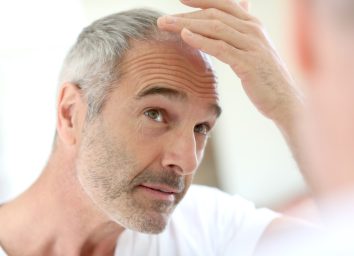Morning Exercises You Shouldn't Skip After 60, Says Science
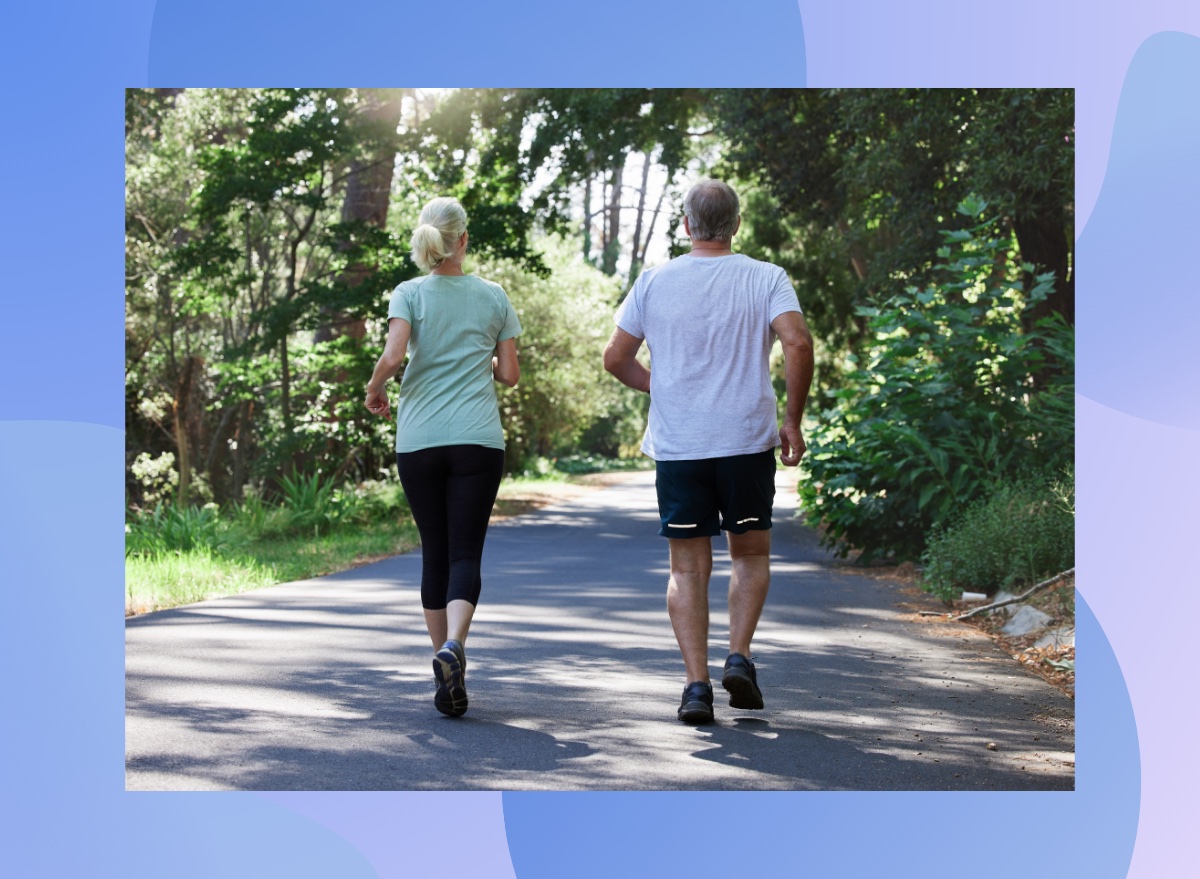
We can't stress it enough: If you're over 60, it's crucial that you continue exercising as much as you can, and preferably with a healthy dose of strength training. According to a study published in the European Heart Journal, which analyzed more than 1 million older adults, simply exercising roughly one hour more per week than usual was linked to an 11% lower risk of heart disease. What's more, the same research found that stopping physical activity around the age of 60 results in a 27% higher risk of heart disease.
"It's in line with studies of other treatment interventions that show it's clearly never too late to improve things," Michael Miyamoto, M.D., a cardiologist with Mission Hospital in Southern California, explained to Healthline. "It's also in line with other studies of exercise specifically showing that even those who take up exercise later in life will see clinical benefit."
Now, you may be wondering when you should find time each day for your workouts. Well, generally speaking, the best time of day to exercise—with the one exception of the late evening, which will throw off your sleep—is whenever you'll feel most motivated to do it. But there's tons of research suggesting that the early morning is a great way to go. After all, exercise is an excellent way to jumpstart your day with a vigorous boost of energy and enhance your sleep. Furthermore, it creates an "after-burn" effect that could help you burn more fat.
According to one study published in the Journal of Clinical Endocrinology and Metabolism, working out before eating breakfast can do a world of fitness good. The researchers asked a group of overweight subjects to exercise in the morning either before or after eating breakfast. The group that engaged in morning routine first thing ended up burning double the amount of fat as the other cohort. Study authors also report the pre-breakfast exercise group experienced "profound and positive health effects" due to increased bodily insulin responses.
Morning exercise has also been shown to improve decision-making skills and overall cognition for the remainder of the day in older individuals, per this research published in the British Journal of Sports Medicine. It all begs the question, what are the exercises you should do? Read on to learn about some of the exercises you'd be wise to do in the morning if you're getting older. And for some exercises to avoid, don't miss this list of The Worst Exercises You Can Do After 60.
Perform Some Hip Bridges
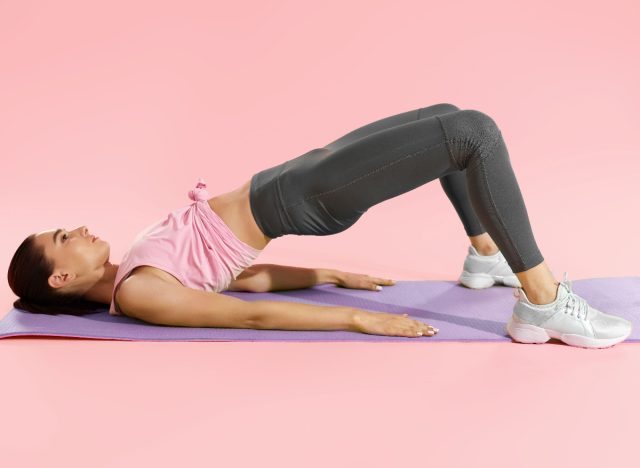
This exercise is simple, easily mastered by beginners, and offers plenty of health benefits that are particularly attractive for older individuals. A lifetime spent sitting down for hours at a time can result in extremely tight and weak hip and glute muscles by the time one's 60th birthday rolls around.
Thankfully, this basic hip exercise is perfect for isolating, targeting, and ultimately strengthening both the glutes and hamstrings. While there are many causes of hip pain in old age, strengthening these muscles should go a long way toward fostering more mobile, healthier hips and buttocks. Additionally, VeryWellFit notes proper hip raises can also improve core strength and workout lower back muscles.
You don't need any equipment to perform hip bridges, but lying down on a yoga or exercise mat may be preferable for you. Begin by lying down with your knees bent and feet flat on the floor. Make sure your back is firmly square on the floor, and from there squeeze your buttocks and push your hips into the air. Pause for a moment, then lower your hips back downward.
Go for a Brisk Walk
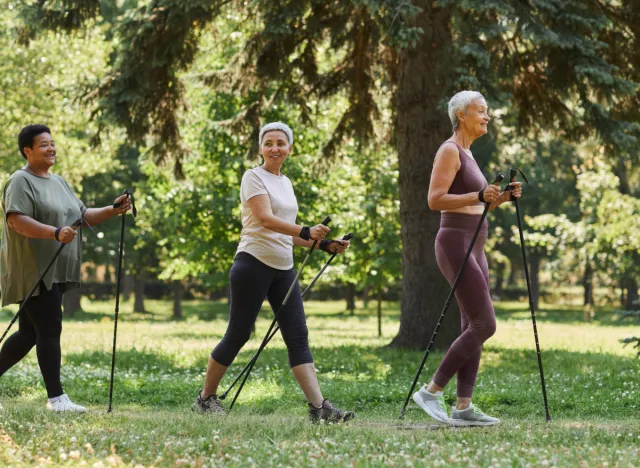
Fact: Taking a morning walk offers loads of health benefits. To start, per the Heart Foundation, all it takes is a half-hour walk each day to cut your risk of heart disease by as much as 35-40%!
Perhaps your main motivator is to lose extra pounds or maintain your current body weight. Well, there's scientific reason to believe that habitually walking can help with that. Harvard scientists analyzed 32 genes known to promote obesity among 12,000 people, and the researchers concluded that a daily walk effectively cuts genetic risk of obesity by half!
"In our study, a brisk one-hour daily walk reduced the genetic influence towards obesity, measured by differences in BMI by half. On the other hand, a sedentary lifestyle marked by watching television four hours a day increased the genetic influence by 50 percent," states study author Qibin Qi, Ph.D.
Walking can also foster a longer lifespan in general. Research published in the American Journal of Clinical Nutrition reports walking for around a half hour each day cuts risk of death by up to 30%. Even better, participants who were largely inactive before the study reaped the most life-extending benefits from their new walking habit – further solidifying that it's never too late to get moving. And if walking is your favorite form of exercise, don't miss The Secret Cult Walking Shoe That Walkers Everywhere Are Totally Obsessed With.
Do Some Stretches
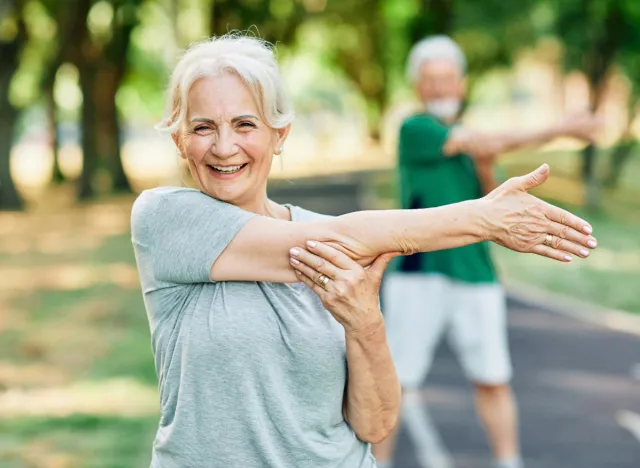
Stretching represents a calmer, less strenuous way to start your day the right way. According to Livestrong, a morning stretching regimen can help improve your posture, reduce aches and pains, and provide a nice energy boost. Moreover, the American Heart Association recommends stretching first thing in the morning after getting out of bed.
Why? At that time your muscles will be a bit warmer than usual after spending all night under the covers. Consequently, they'll be more receptive to the soothing effects of a good stretch.
Furthermore, The Mayo Clinic and the American Council on Exercise tell us that stretching improves blood flow and oxygen circulation throughout the body and brain. More blood flow to the brain means extra cognitive sharpness and concentration skills, which suggests a morning stretch may just be as eye-opening as a cup of coffee. For more on the benefits of getting loose in the morning, see here for the One Secret Side Effect of Stretching Before Breakfast, Say Experts.
Do Some Squats
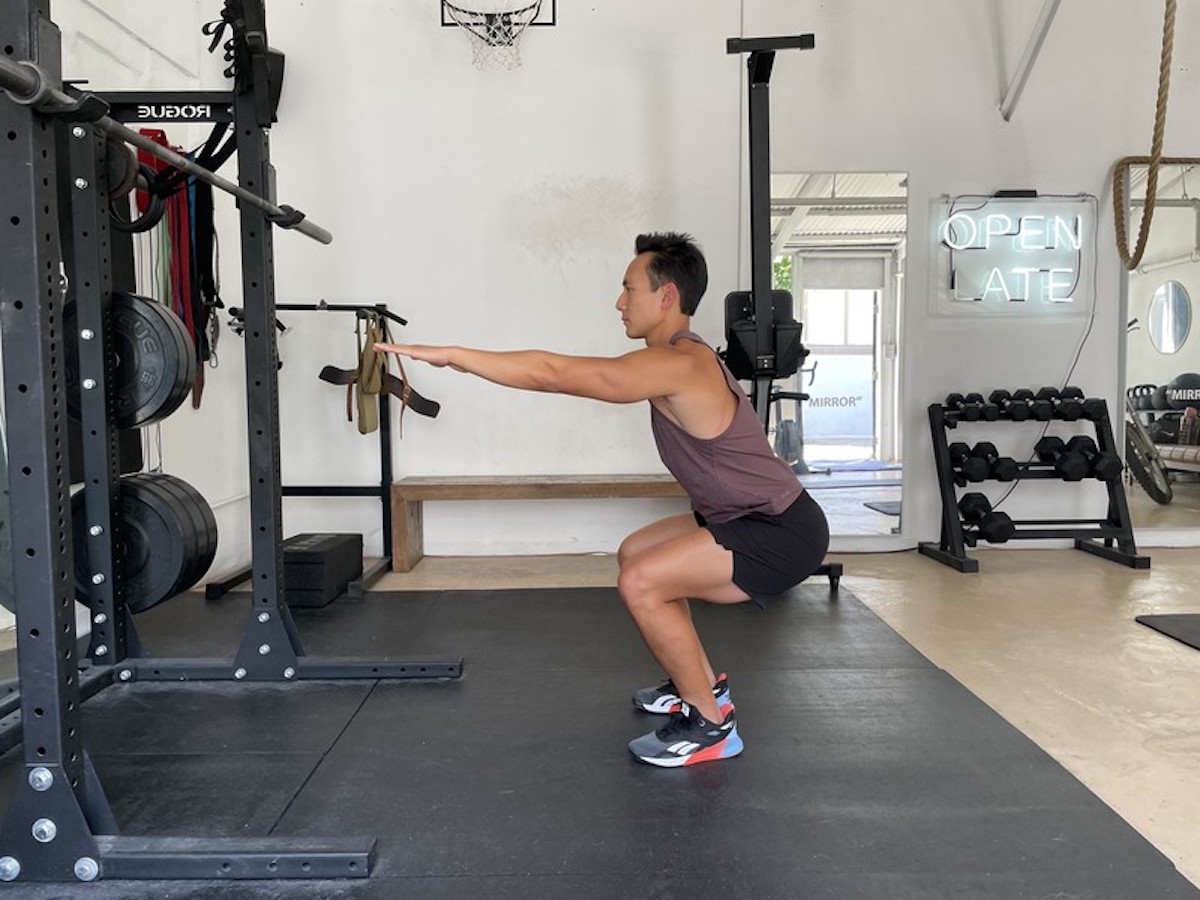
Strength training is crucial for staying fit, active, lean, and healthy well into old age. (For more on this, read about the Secret Tricks for Getting a Lean Body After 60, Say Experts.) But we'd like to highlight one particular move: the squat.
Research has shown that, as you age, doing more squats on a daily basis is one of the keys to a longer, more active life. The simple squat recruits your body's largest muscle groups, helps with balance and posture, strengthens your core, and helps your brain stave off dementia while increasing your bone density.
Scientists who study the world's oldest people have observed that they do tons of squats. "The longest-lived women in the history of the world lived in Okinawa, and I know from personal experience that they sat on the floor," Dan Buettner, a researcher and journalist, recently explained to Well+Good. "I spent two days with a 103-year-old woman and saw her get up and down from the floor 30 or 40 times, so that's like 30 or 40 squats done daily."
If you're in the market for a great workout that utilizes squats, read up on how you can Build Muscle and Get Lean with This 4-Move At-Home Workout.


